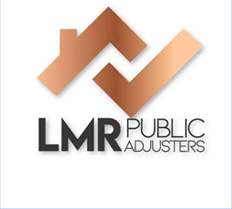Plumbing leaks are among the most common household issues, and while they may seem minor at first glance, their consequences can be far-reaching. One of the most insidious outcomes of a plumbing leak is the development of hidden mold. Mold thrives in moist, dark environments, making the spaces behind walls, under floors, and within ceilings ideal breeding grounds—especially after a leak. Unfortunately, mold doesn’t always make its presence known immediately. It can lurk undetected for weeks or even months, silently affecting your health and damaging your property.
Understanding the signs of hidden mold after a plumbing leak is crucial for homeowners and property managers alike. Mold not only compromises the structural integrity of your home but also poses serious health risks, including respiratory issues, allergic reactions, and long-term illnesses. If you’ve recently experienced a plumbing leak, it’s essential to remain vigilant and proactive in identifying potential mold growth before it escalates into a larger problem.
At LMR Public Adjusters, South Florida’s premier public adjusters, we specialize in helping property owners navigate the complexities of insurance claims related to water and mold damage. Our dedicated team works tirelessly to ensure you receive the maximum compensation for your losses. In this comprehensive guide, we’ll explore the telltale signs of hidden mold, how to detect it, and what steps to take if you suspect mold is growing in your home after a plumbing leak.
1. Musty Odors That Linger
One of the first and most common signs of hidden mold is a persistent musty odor. This smell is often described as earthy, damp, or similar to wet socks. It may be most noticeable in areas where the plumbing leak occurred, such as under sinks, behind walls, or in basements. Even if you can’t see any visible mold, the presence of this odor is a strong indicator that mold spores are active and growing somewhere out of sight.
Mold emits microbial volatile organic compounds (MVOCs) as it grows, which are responsible for the musty smell. These compounds can permeate through walls and flooring, making it difficult to pinpoint the exact location of the mold without professional help. If you notice a musty smell that doesn’t go away even after cleaning and airing out the space, it’s time to investigate further.
Ignoring this sign can lead to worsening conditions, as mold continues to spread and damage your property. It’s important to act quickly by contacting a professional to assess the situation. If you’re dealing with a recent plumbing issue, consider reaching out to LMR Public Adjusters to help you evaluate the damage and file a comprehensive insurance claim.
2. Discoloration and Staining on Walls or Ceilings
Another clear sign of hidden mold is discoloration or staining on your walls, ceilings, or floors. These stains may appear as yellow, brown, green, or even black patches and often indicate moisture has been present for an extended period. While some stains may be caused by water alone, mold often follows closely behind any water intrusion.
In many cases, these stains are the result of mold growing behind the surface, pushing through the drywall or ceiling tiles. You might notice bubbling paint, peeling wallpaper, or warped surfaces—each of which suggests that moisture has compromised the material. These visual cues should never be ignored, as they often point to a larger mold problem hidden beneath the surface.
It’s also worth noting that mold can grow in areas that are not immediately visible, such as behind baseboards, under carpets, or within HVAC systems. If you see any unusual discoloration, especially after a plumbing leak, it’s essential to have a professional inspection conducted to determine the extent of the damage.
For property owners in South Florida, LMR Public Adjusters offers expert support in identifying mold-related damage and ensuring your insurance claim reflects the full scope of the problem. Our team is experienced in working with insurance companies to secure the compensation you deserve.
3. Health Symptoms That Don’t Go Away
One of the most alarming signs of hidden mold is the onset of unexplained health symptoms. Mold exposure can affect individuals differently, but common symptoms include:
- Persistent coughing or sneezing
- Watery or itchy eyes
- Skin rashes or irritation
- Chronic fatigue or headaches
- Worsening asthma or respiratory conditions
These symptoms often worsen when you’re at home and improve when you leave the property, which is a strong indication that something in your environment—like mold—is affecting your health. Children, the elderly, and individuals with compromised immune systems are particularly vulnerable to mold-related illnesses.
After a plumbing leak, mold can begin to grow within 24 to 48 hours if the area is not properly dried and treated. Even if the leak seems minor, the resulting moisture can create the perfect conditions for mold to thrive. If you or your family members begin experiencing health issues that coincide with a recent leak, it’s time to take action.
Don’t wait for symptoms to escalate. Contact a professional to conduct a mold inspection and consider consulting with LMR Public Adjusters to help you document the damage and file a claim. Our team understands the urgency of mold-related health risks and works swiftly to protect your home and well-being.
4. Warped or Buckled Building Materials
When mold grows behind walls or under flooring, it often causes structural materials to warp, buckle, or deteriorate. This is especially true for materials like drywall, wood, and laminate flooring, which absorb moisture easily. If you notice that your walls are bowing, your floors feel uneven, or your ceiling appears to be sagging, these could be signs of hidden mold damage.
These physical changes occur because mold breaks down the organic materials it feeds on, weakening the structural integrity of your home. Over time, this can lead to costly repairs and even pose safety hazards. In some cases, you may also hear creaking or cracking sounds as the materials shift or deteriorate.
It’s important to address these issues promptly, as delaying repairs can lead to more extensive damage and higher restoration costs. If your home has recently experienced a plumbing leak, be on the lookout for any changes in the structure of your walls, floors, or ceilings.
At LMR Public Adjusters, we help homeowners assess the full extent of damage caused by hidden mold and water intrusion. Our team works with trusted contractors and mold remediation experts to ensure your property is restored to its original condition—and that your insurance claim covers every aspect of the damage.
5. Increased Allergy Symptoms in Specific Rooms
If you or your family members experience allergy symptoms that seem to flare up in certain rooms of the house, this could be a sign of hidden mold. Mold spores can become airborne and circulate through your HVAC system, but they often concentrate in the areas closest to the source of the growth. This means that symptoms may be more pronounced in rooms where the plumbing leak occurred or where moisture has accumulated.
Common allergy symptoms include sneezing, nasal congestion, itchy eyes, and throat irritation. These symptoms may be mistaken for seasonal allergies or a common cold, but if they persist or worsen indoors, mold could be the culprit. Pay close attention to how you feel in different parts of your home, especially if you’ve recently dealt with a plumbing issue.
Using air purifiers and dehumidifiers can help reduce airborne mold spores, but they won’t eliminate the source of the problem. A professional mold inspection is necessary to locate and remove hidden mold colonies. If you suspect mold is affecting your health, don’t hesitate to take action.
For residents in South Florida, LMR Public Adjusters offers comprehensive support for mold-related insurance claims. Our experienced team will guide you through the process, ensuring that your claim includes all necessary documentation and evidence to secure the compensation you need for remediation and repairs.
Conclusion
Mold is a silent intruder that often follows in the wake of plumbing leaks, hiding behind walls and under floors while causing significant damage to your property and health. Recognizing the signs of hidden mold—such as musty odors, discoloration, health symptoms, warped materials, and localized allergy flare-ups—is essential for early detection and prevention of further harm.
Taking swift action after a plumbing leak can make all the difference. Whether it’s scheduling a mold inspection, initiating repairs, or filing an insurance claim, every step counts in protecting your home and your loved ones. Don’t let hidden mold compromise your safety or your investment.
At LMR Public Adjusters, we are committed to advocating for property owners across South Florida. Our personalized, dedicated team ensures that your insurance claims are handled with the utmost care and expertise. If you suspect mold after a plumbing leak, let us help you navigate the complexities of your claim and secure the compensation you deserve. Learn more about our services by visiting our blog or exploring our locations to find a public adjuster near you.




